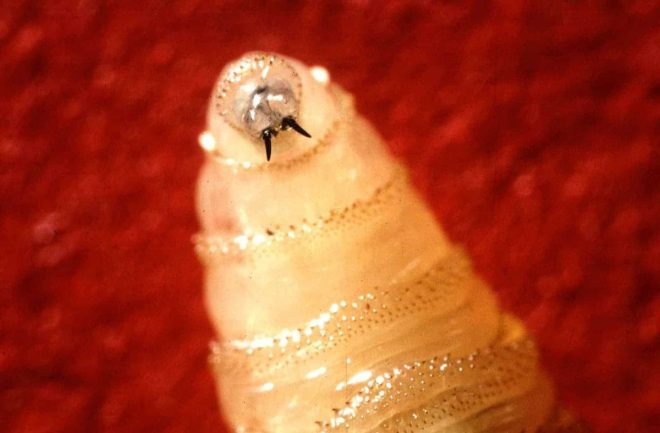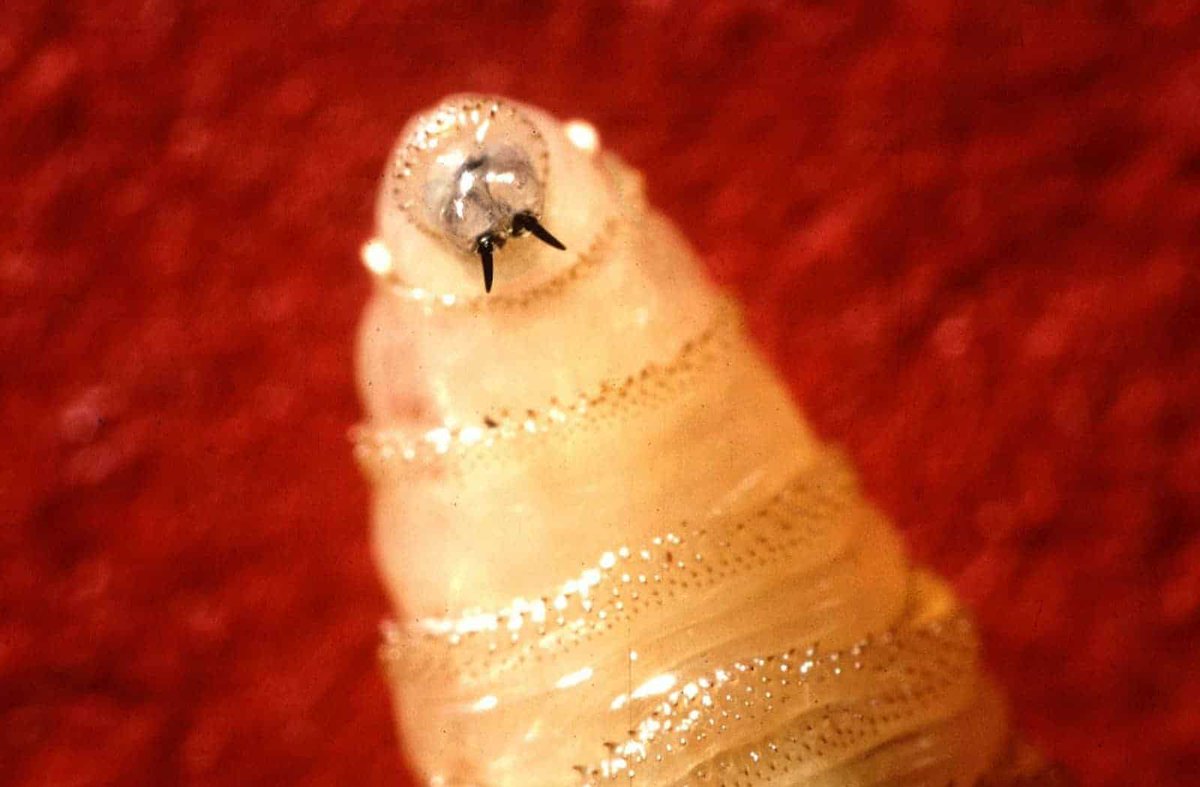
Maggot Nightmare: Mexico Reports First Human Screwworm Case
In a shocking and distressing development, Mexico has reported its first confirmed case of human screwworm infestation. The incident involves a 77-year-old woman residing in Chiapas, who has become the unfortunate host of live maggots that are actively consuming her flesh. This alarming case has raised significant health concerns and has drawn attention to the risks associated with screwworms, particularly in a country where such infestations were previously thought to be eradicated.
Understanding Screwworms
Screwworms are the larvae of the blowfly, scientifically known as Cochliomyia hominivorax. These parasitic insects are notorious for their gruesome feeding habits, as they invade open wounds or healthy tissue, leading to severe infections and tissue damage. Unlike other types of maggots that typically feed on decaying matter, screwworms are capable of infesting living hosts, making them particularly dangerous.
The Infestation Incident
The case reported in Chiapas marks a significant public health concern for Mexico. The 77-year-old woman, whose identity has not been disclosed, has been described as having live maggots feeding on her flesh. This infestation not only poses a direct threat to her health but also raises alarms about the potential resurgence of screwworm populations in the region.
Historical Context
Screwworms were once a significant problem in various countries, including Mexico, but extensive eradication efforts led to their decline in the latter half of the 20th century. The use of sterilization techniques and the release of sterile male flies into the environment successfully reduced the number of screwworm cases. However, this recent report indicates that these efforts may need to be revisited, as the presence of screwworms in humans suggests a resurgence in the population.
- YOU MAY ALSO LIKE TO WATCH THIS TRENDING STORY ON YOUTUBE. Waverly Hills Hospital's Horror Story: The Most Haunted Room 502
Health Implications
The health implications of a screwworm infestation are dire. Infected individuals may experience severe pain, swelling, and secondary infections due to the destruction of tissue. If left untreated, these infestations can lead to serious complications, including systemic infections and even death. Medical professionals must act swiftly to remove the maggots and treat any resulting infections to prevent long-term damage.
Preventive Measures and Response
In light of this alarming case, public health officials in Mexico are likely to ramp up awareness campaigns to educate citizens on the risks associated with screwworms. Preventive measures may include:
- Public Awareness: Informing the public about the signs of screwworm infestations and encouraging them to seek medical attention for unusual wounds or skin lesions.
- Monitoring and Surveillance: Implementing monitoring programs in areas where screwworms are known to exist, particularly in rural and agricultural regions.
- Collaboration with Veterinary Services: Since screwworms can also infest livestock, collaboration with veterinary services is crucial to monitor and control infestations in animals, which can serve as reservoirs for the larvae.
The Role of Medical Professionals
Medical professionals play a vital role in addressing screwworm infestations. They must be trained to recognize the signs of infestation and act quickly to remove the larvae. Treatment typically involves:
- Surgical Removal: The primary method for treating a screwworm infestation is the surgical removal of the larvae. This is crucial to prevent further tissue damage and infection.
- Antibiotic Therapy: To combat any secondary infections that may arise due to the open wounds, antibiotics are often prescribed.
- Wound Care: Proper wound care and monitoring are essential to ensure that the affected area heals appropriately and to prevent recurrence.
Conclusion
The recent report of the first human screwworm case in Mexico serves as a grim reminder of the potential for these parasites to resurface. With the 77-year-old woman in Chiapas becoming the unfortunate host, it highlights the need for renewed vigilance and proactive measures to prevent further infestations. Public health officials, medical professionals, and the community must work together to address this alarming issue and safeguard against the dangers posed by screwworms. As the situation unfolds, it is crucial to stay informed and take necessary precautions to protect public health.

MAGGOT NIGHTMARE: MEXICO REPORTS FIRST HUMAN SCREWWORM CASE
A 77-year-old woman in Chiapas is now the unlucky host of Mexico’s first confirmed screwworm infestation – yes, live maggots eating her flesh.
The larvae don’t wait for roadkill – they screw into living tissue with… pic.twitter.com/ua1iWT2oia
— Mario Nawfal (@MarioNawfal) April 19, 2025
MAGGOT NIGHTMARE: MEXICO REPORTS FIRST HUMAN SCREWWORM CASE
In a deeply unsettling report from Chiapas, Mexico, a 77-year-old woman has become the unfortunate host of the country’s first confirmed case of human screwworm infestation. Yes, you read that right—live maggots are literally eating her flesh. This terrifying incident has raised alarms about the potential resurgence of these pests, which had long been eradicated from human populations in many parts of the world.
The screwworm, specifically the *Cochliomyia hominivorax*, is a parasitic fly whose larvae are notorious for infesting living tissue. Unlike many other maggots that thrive on decaying matter, these little horrors actively seek out healthy flesh to burrow into, causing severe damage and infection. In this case, the woman’s situation has highlighted not just a personal tragedy but also broader public health concerns in Mexico.
What Are Screwworms?
Screwworms are the larvae of certain species of flies, primarily the New World screwworm. They are particularly infamous for their gruesome feeding habits. When the female fly lays her eggs, they hatch into larvae that immediately seek out living tissue. This is where things get really disturbing—the larvae feed on the host’s flesh, which can lead to severe infections and, in some cases, even death if not treated promptly.
Historically, screwworm infestations have been a significant concern in livestock, leading to economic losses in the agriculture sector. However, the fact that they can also affect humans is a chilling reminder of how interconnected our ecosystems are. The recent case in Chiapas is a stark illustration of how these parasites can resurface, even in regions where they were thought to be eradicated.
The Incident in Chiapas
The report detailing this first human screwworm case in Mexico describes the harrowing experience of the elderly woman. After noticing strange lesions on her skin, she sought medical attention, which led to the shocking discovery of live maggots embedded in her flesh. According to local health authorities, this incident may be linked to poor sanitation and hygiene conditions prevalent in certain areas of Chiapas.
Health officials are understandably concerned about the implications of this case. Screwworms can thrive in environments where hygiene practices are lacking, making it crucial for communities to prioritize sanitation. The presence of this infestation not only endangers the individual but also poses a risk to public health as it can lead to secondary infections and spread to others if left unchecked.
How Do Screwworm Infestations Occur?
Understanding how screwworm infestations occur is essential in preventing future cases. The lifecycle of the screwworm begins when adult flies lay their eggs on open wounds or even in the mucous membranes of living animals and humans. Once the eggs hatch, the larvae begin to feed on the host’s flesh.
Several factors can contribute to an increased risk of infestations, including:
– **Poor hygiene**: Lack of proper wound care and sanitation can create ideal conditions for the flies to lay their eggs.
– **Environmental conditions**: Warm and humid climates can facilitate the growth and reproduction of screwworms.
– **Animal interactions**: Close contact with infested animals can lead to human cases, especially in rural or agricultural areas.
To learn more about screwworm biology and prevention, you can check out resources from the [Centers for Disease Control and Prevention (CDC)](https://www.cdc.gov).
Health Implications of Screwworm Infestations
The health implications of a screwworm infestation can be severe. If not treated promptly, the larvae can cause extensive tissue damage, leading to secondary infections that may require surgical intervention. Patients may experience:
– **Severe pain and discomfort**: The presence of maggots eating away at the flesh is not only painful but also psychologically distressing.
– **Infection**: Open wounds can easily become infected, leading to systemic issues if bacteria enter the bloodstream.
– **Potential for death**: In extreme cases, untreated infestations can be fatal, particularly in vulnerable populations like the elderly or immunocompromised individuals.
Immediate medical attention is crucial for anyone suspected of having a screwworm infestation. Treatments typically involve the removal of the larvae, cleaning the wound, and possibly administering antibiotics to prevent infection.
Preventing Screwworm Infestations
With the alarming resurgence of screwworms in Chiapas, prevention becomes paramount. Here are some essential steps that communities can take to mitigate the risk:
1. **Improve sanitation**: Access to clean water and proper waste disposal can significantly reduce the likelihood of infestations. Communities should prioritize hygiene education and resources.
2. **Wound care**: Immediate and proper care for any wounds or sores is vital. Keeping wounds clean and covered can prevent flies from laying eggs.
3. **Education and awareness**: Public health campaigns should raise awareness about the risks of screwworms and educate residents on how to protect themselves and their families.
4. **Monitoring and surveillance**: Health authorities must actively monitor for signs of screwworm infestations and respond swiftly to any cases that arise.
For more insights into preventing such infestations, you can visit the [World Health Organization (WHO)](https://www.who.int) for guidelines and recommendations.
Community Response and Support
In light of this distressing incident, local health officials and community leaders are stepping up to address the situation. They are working to provide support to the affected individual, ensuring she receives the necessary medical care and follow-up treatment.
Moreover, community outreach programs are being initiated to educate the public about the risks associated with screwworms and the importance of hygiene. This proactive approach aims to empower residents with knowledge and resources to prevent future infestations.
It’s crucial for communities to come together during such crises, offering support to those affected and fostering an environment where health and safety are prioritized.
Conclusion
The case of the 77-year-old woman in Chiapas is a stark reminder of the potential dangers posed by screwworms and similar parasites. As Mexico grapples with this shocking development, it underscores the importance of public health initiatives, education, and community engagement in preventing such infestations.
Addressing the root causes of these infestations—such as poor sanitation and lack of access to healthcare—can help protect vulnerable populations and ensure that the horrors of live maggots eating flesh do not become a common occurrence. By working together, communities can create a safer environment for everyone, reducing the risk of future screwworm cases and other public health threats.
